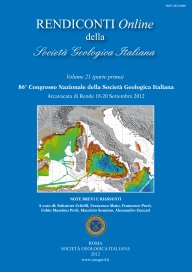
Investigation of land subsidence in Southern Mahyar Plain in Isfahan province, Iran
Ghafoori M. (*), Salehi R. (*), Lashkaripour G.R. (*) & Dehghani M. (**)
(*) Department of Geology, Faculty of Sciences, Ferdowsi University of Mashhad, Iran. E-mail: ghafoori@um.ac.ir
(**) Geodesy and Geomatics Engineering Faculty, K.N.Toosi University of Technology, Iran.
Volume: 21/2012
Pages: 399-400
Abstract
Land subsidence is one of the environmental hazards in which various mechanisms take part in its formation and development. One of the most important factors of subsidence is the drop of groundwater level that caused subsidence in many plains inside Iran in the recent decades. Excessive extraction of groundwater has caused severe land subsidence and earth fissures in the Southern Mahyar Plain located in Isfahan province in the peripheral part of Iran's central desert. In the last decades, fast agricultural expansion coupled with rapid population growth has tremendously increased pressure on the ground water resources. This paper deals with the relation between declining of ground water level, land subsidence and earth-fissure based on the available data in Southern Mahyar Plain. Based on field data, the temporal and spatial distribution of land subsidence is investigated and the causes for earth fissures are analyzed. Collected data using peizometric wells on the plain surface shows that the mean drop of water level in the period of 12 water years was 6m. Moreover, investigation of groundwater level fluctuations and compiling iso-depth maps in the district of the plain confirmed sharp drop of groundwater level. The areal distribution of the land subsidence is closely related to the cones of depression in the main exploited aquifers. In addition, field surveys in the study area indicated that fissures and cracks due to subsidence occur in the peripheral part of plain that inflicted severe losses to the agricultural lands.
Interferometric SAR technique (InSAR) is the most modern technology for the subsidence surveys.
In this study, Interferometric SAR technique with the aid of radar image of the satellite ENVISAT was used for the determination of the area affected by subsidence and investigation of surface undulation in short-term and long-term periods. Also by analysis of maximum time series, the mean rate of subsidence in the period of 2003-2006 was calculated to be 8.2 cm yr-1.
Keywords
Get Full Text